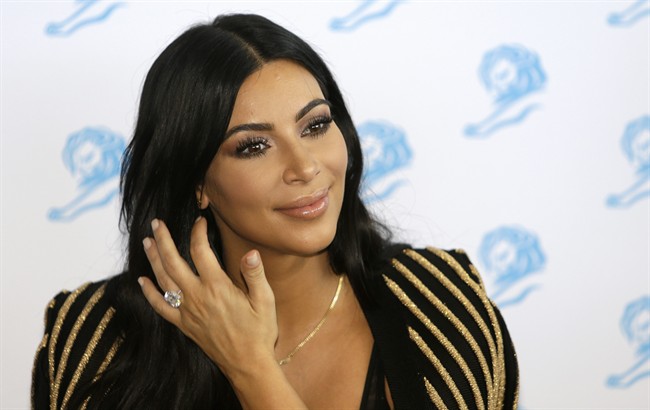If you never thought Kim Kardashian would be embroiled in a geopolitical crisis, you were wrong.

Azerbaijan’s ambassador to the United States has criticized the reality TV star for weighing in on the recent hostilities between his country’s military and the ethnic Armenian separatists, backed by the Armenian military, in the disputed region of Nagorno-Karabakh — a largely ethnic Armenian enclave inside Azerbaijan.
READ MORE: Why are Kim Kardashian and Khloe Kardashian tweeting their prayers for Armenia?
Kim and Khloe Kardashian, both proud of their Armenian-American heritage, urged their vast social media followings to pray for Armenia amid violent clashes that left at least 64 people dead in recent days.
“I’m not sure Ms. Kardashian is a military or political analyst, so maybe we should all do what we do best,” Ambassador Elin Suleymanov told Foreign Policy in a phone interview published Wednesday.
“I personally would be a very bad reality TV star, so I try not to cross into areas I’m not familiar,” Suleymanov told Foreign Policy. “She’s very famous and beloved by her fans, but matters of war and peace are a little too serious for a reality TV star,”
READ MORE: Kim Kardashian, Emily Ratajkowski post topless selfie, set Internet on fire
The Kardashian sisters’ “Pray for Armenia” messages had the potential to reach roughly 200 million followers on Instagram, Twitter and Facebook.
Azerbaijan and Armenia agreed Tuesday to bring an end some of the worst violence since 1994 after three days of fighting and shelling.
Nagorno-Karabakh isn’t a large area, just 4,400 square kilometres. Nowadays, the autonomous region is home to about 146,000 people — the majority of whom are ethnic Armenian.
Tensions between the two nations reached a boiling point after the break-up of the Soviet Union when the Nagorno-Karabakh parliament voted for unification with Armenia.
As many as 30,000 people are estimated to have died between the start of the war in 1991 and the ceasefire agreement in 1994, while one million others were displaced, according to BBC.
Although Nagorno-Karabakh is landlocked inside Azerbaijan’s borders, a disputed corridor of territory surrounds the autonomous region along the borders of Armenia and Iran.
READ MORE: Armenia marks centennial of 1915 massacre
Both Armenia and Azerbaijan claimed the other side was responsible for the violent flare-up.
But in a separate interview with Agence France-Presse, Ambassador Suleymanov seemed to suggest the violence was sparked after a show of friendship between his country and the U.S. at last week’s Nuclear Security Summit in Washington, D.C.
“History shows that every time something like this happens, there is a provocation that overshadows that success,” he said. “This time with the summit just finished and President Aliyev still in transit back home — he hadn’t even landed — when the escalation began.”
Prior to the truce, the Canadian government called on both sides to “show restraint” and “immediately return to a true ceasefire.”
Conservative Foreign Affairs critic Tony Clement and deputy critic Peter Kent said they “strongly encourage Armenian and Azerbaijani forces to end this violence.”


Comments